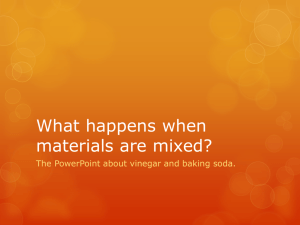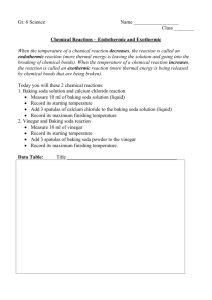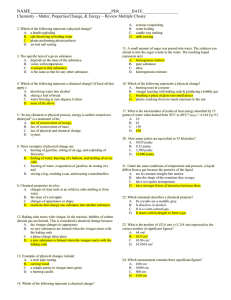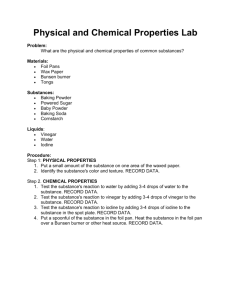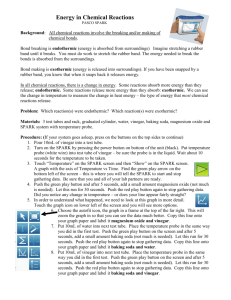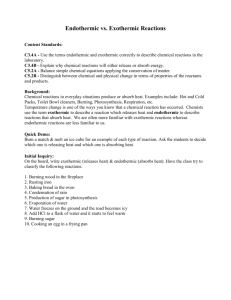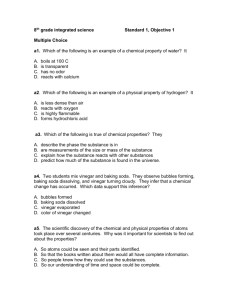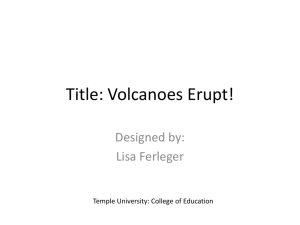Chemical Reactions
advertisement
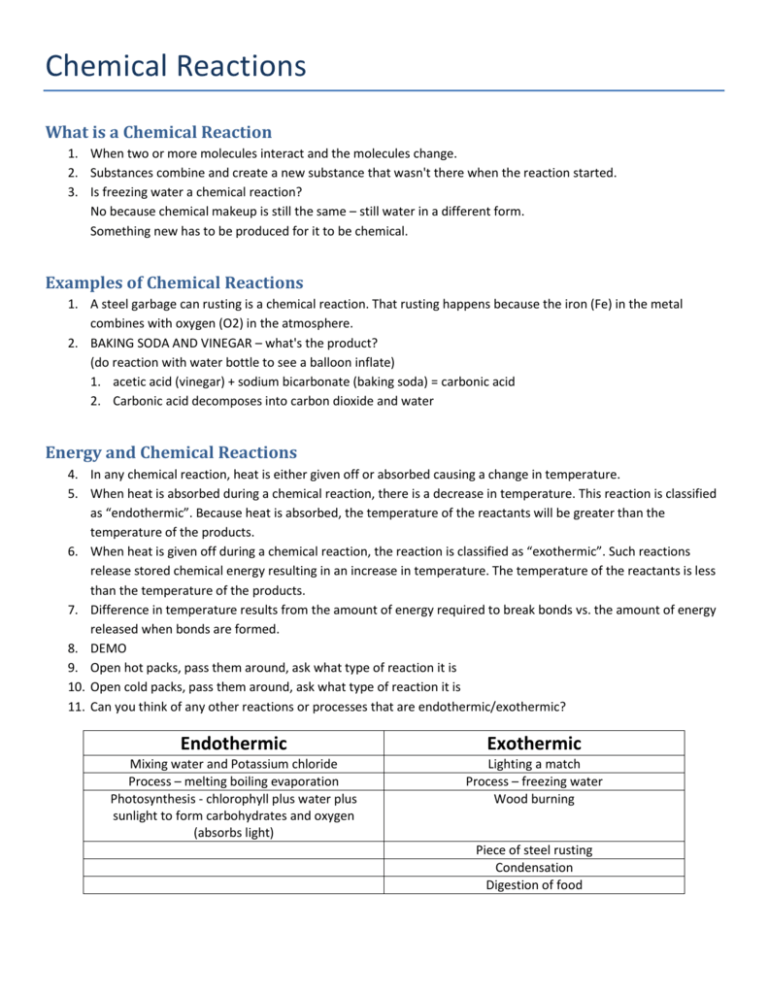
Chemical Reactions What is a Chemical Reaction 1. When two or more molecules interact and the molecules change. 2. Substances combine and create a new substance that wasn't there when the reaction started. 3. Is freezing water a chemical reaction? No because chemical makeup is still the same – still water in a different form. Something new has to be produced for it to be chemical. Examples of Chemical Reactions 1. A steel garbage can rusting is a chemical reaction. That rusting happens because the iron (Fe) in the metal combines with oxygen (O2) in the atmosphere. 2. BAKING SODA AND VINEGAR – what's the product? (do reaction with water bottle to see a balloon inflate) 1. acetic acid (vinegar) + sodium bicarbonate (baking soda) = carbonic acid 2. Carbonic acid decomposes into carbon dioxide and water Energy and Chemical Reactions 4. In any chemical reaction, heat is either given off or absorbed causing a change in temperature. 5. When heat is absorbed during a chemical reaction, there is a decrease in temperature. This reaction is classified as “endothermic”. Because heat is absorbed, the temperature of the reactants will be greater than the temperature of the products. 6. When heat is given off during a chemical reaction, the reaction is classified as “exothermic”. Such reactions release stored chemical energy resulting in an increase in temperature. The temperature of the reactants is less than the temperature of the products. 7. Difference in temperature results from the amount of energy required to break bonds vs. the amount of energy released when bonds are formed. 8. DEMO 9. Open hot packs, pass them around, ask what type of reaction it is 10. Open cold packs, pass them around, ask what type of reaction it is 11. Can you think of any other reactions or processes that are endothermic/exothermic? Endothermic Exothermic Mixing water and Potassium chloride Process – melting boiling evaporation Photosynthesis - chlorophyll plus water plus sunlight to form carbohydrates and oxygen (absorbs light) Lighting a match Process – freezing water Wood burning Piece of steel rusting Condensation Digestion of food BAKING SODA AND VINEGAR – What Type of Reaction? 1. Do reaction in baggie or plastic cup so students can feel temperature before and after. 2. If endothermic heating up chemicals should speed up the reaction – use warmers to heat up vinegar bag and compare to speed of reaction done at room temperature. Stoichiometric Ratio 1. Optimum amount of "ingredients" or reactants such that all ingredients are used up, and there is none left over. 2. Comparison to cooking – how many people have baked cake before? Why do you have to follow the recipe? What happens when you add too much water? 3. Figure out stoichiometric ratio for baking soda and vinegar 4. Split into two groups – each gets bag with two scoops baking soda two scoops vinegar. 5. One group gets extra baking soda, the other group gets extra vinegar 6. See how many scoops we have to add to balance things out. Baggie Explosions 1. Using stoichiometric ratio, see what the smallest number of ingredients you can use to make the baggie pop. Materials Required Ice packs (CVS) Hot packs (CVS) Baking Soda Vinegar Sandwich baggies Snack baggies Glass bottle for balloon inflation Balloons Spoons

